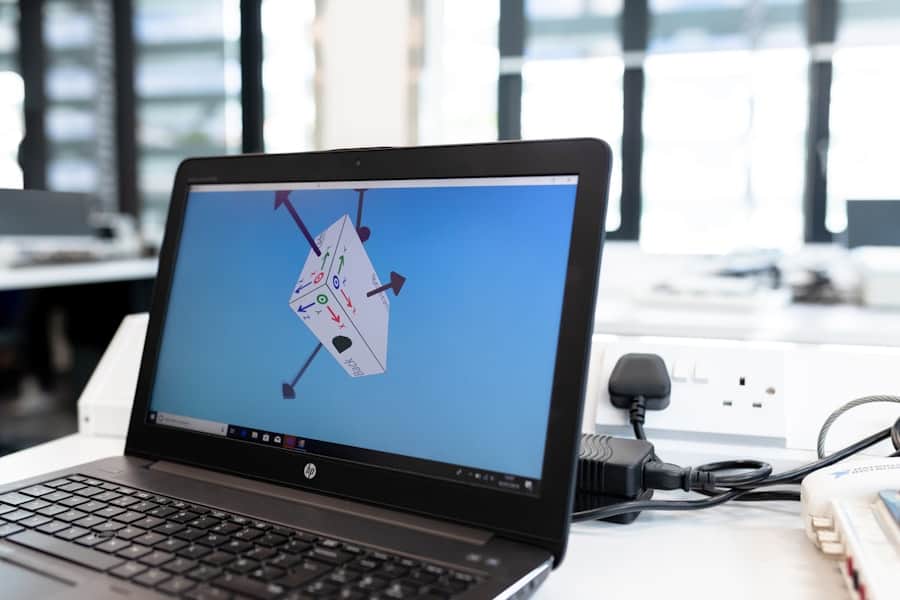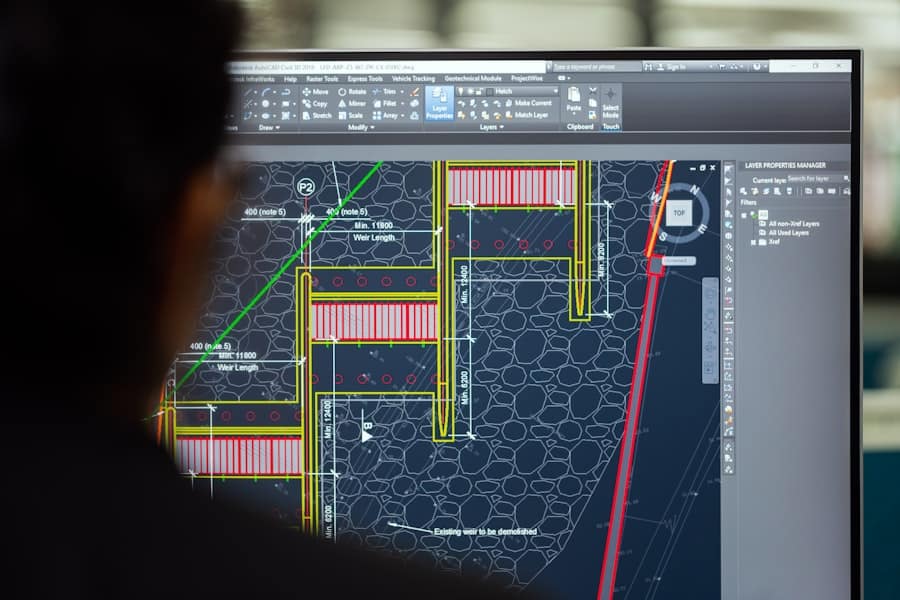The advent of artificial intelligence (AI) has revolutionized numerous industries, and the realm of photo and video editing is no exception. With the integration of AI technologies, editing processes that once required extensive manual labor and expertise can now be executed with remarkable efficiency and precision. AI algorithms are capable of analyzing vast amounts of data, learning from patterns, and making intelligent decisions that enhance the quality of visual content.
This transformation not only streamlines workflows but also democratizes the art of editing, allowing individuals with minimal technical skills to produce professional-grade results. AI’s influence in this domain is multifaceted, encompassing a wide array of functionalities that cater to both amateur creators and seasoned professionals. From automating mundane tasks to providing sophisticated tools for creative expression, AI is reshaping how we approach visual storytelling.
As we delve deeper into the various applications of AI in photo and video editing, it becomes evident that this technology is not merely a trend but a fundamental shift in how we create and consume visual media.
Key Takeaways
- AI is revolutionizing the way we edit photos and videos, making the process faster and more efficient.
- AI enhances image recognition and object detection, allowing for more accurate and precise editing.
- Automated color correction and enhancement powered by AI can significantly improve the quality of images and videos.
- AI plays a crucial role in content-aware editing and retouching, making it easier to remove imperfections and enhance the overall look of the content.
- AI contributes to smart video editing and scene detection, making it easier to organize and edit video content.
How AI Enhances Image Recognition and Object Detection
Accurate Object Detection with Convolutional Neural Networks
Convolutional neural networks (CNNs) are employed to recognize patterns and features within images, enabling software to identify objects, faces, and even emotions with remarkable accuracy. This capability has far-reaching implications for various applications.
Practical Applications Across Industries
In stock photography, AI can automatically tag images based on their content, making it easier for users to find relevant visuals without sifting through countless files. Similarly, in social media platforms, AI-driven algorithms can detect faces and suggest tagging options, enhancing user engagement.
Enhancing Security and Surveillance
Furthermore, in security and surveillance, AI’s object detection capabilities can identify potential threats in real-time, showcasing its versatility across different sectors.
The Impact of AI on Automated Color Correction and Enhancement
Color correction has long been a labor-intensive aspect of photo editing, requiring a keen eye for detail and a deep understanding of color theory. However, AI has introduced automated solutions that significantly reduce the time and effort involved in this process. By analyzing the color distribution within an image and comparing it to established standards or desired aesthetics, AI algorithms can make intelligent adjustments that enhance the overall visual appeal.
For instance, Adobe’s Sensei technology utilizes machine learning to analyze images and apply color corrections based on the context of the scene. This means that landscapes can be enhanced with vibrant hues while maintaining natural skin tones in portraits. Such intelligent adjustments not only save time but also ensure consistency across a series of images, which is particularly beneficial for photographers working on projects that require a cohesive look.
Moreover, AI-driven tools can learn from user preferences over time, adapting their recommendations to align with individual styles. This personalization aspect allows photographers to maintain their unique artistic vision while benefiting from the efficiency of automated processes. As a result, the integration of AI in color correction not only enhances the quality of images but also empowers creators to focus more on their artistic expression rather than technical adjustments.
The Role of AI in Content-aware Editing and Retouching
Content-aware editing represents another area where AI has made significant strides. Traditional retouching methods often involved painstakingly selecting areas for adjustment or removal, which could be both time-consuming and prone to error. In contrast, AI-powered content-aware tools can intelligently analyze an image’s context and make informed decisions about what to keep or remove.
For example, Adobe Photoshop’s content-aware fill feature leverages AI to seamlessly remove unwanted objects from an image while filling in the background in a way that appears natural. This technology analyzes surrounding pixels and textures to create a convincing fill that maintains the integrity of the original scene. Such capabilities not only enhance the efficiency of retouching but also open up new creative possibilities for photographers and designers.
Additionally, AI can assist in more complex retouching tasks such as skin smoothing or blemish removal. By understanding facial features and skin textures, AI algorithms can apply adjustments selectively, ensuring that the final result looks polished without appearing overly edited. This level of sophistication allows for a more natural look in portraits while still achieving professional-quality results.
AI’s Contribution to Smart Video Editing and Scene Detection
In the realm of video editing, AI has emerged as a powerful ally for creators seeking to streamline their workflows. One of the most notable contributions is in smart video editing and scene detection. Traditional video editing often involves manually sifting through hours of footage to identify key moments or transitions.
However, AI algorithms can analyze video content in real-time, detecting scenes, actions, and even emotions within the footage. For instance, platforms like Magisto utilize AI to automatically edit videos by identifying highlights and creating cohesive narratives from raw footage. By analyzing factors such as motion, audio cues, and visual elements, these tools can generate polished videos with minimal input from users.
This not only saves time but also allows creators to focus on storytelling rather than technical details. Moreover, AI’s ability to recognize specific scenes or themes enables more targeted editing options. For example, if a video contains multiple interviews or events, AI can categorize these segments based on content type or emotional tone, making it easier for editors to assemble a final product that resonates with their audience.
This level of automation not only enhances productivity but also democratizes video editing by making it accessible to those without extensive technical knowledge.
The Future of AI in Photo and Video Editing Apps
As we look ahead, the future of AI in photo and video editing apps appears promising and full of potential. With ongoing advancements in machine learning and computer vision technologies, we can expect even more sophisticated tools that will further enhance the editing experience. For instance, future applications may incorporate augmented reality (AR) features that allow users to visualize edits in real-time or even collaborate with others remotely on projects.
This could involve adaptive interfaces that suggest tools or techniques based on past projects or even predictive editing capabilities that anticipate user needs before they arise. Such innovations would not only streamline workflows but also foster greater creativity by allowing users to explore new possibilities without being bogged down by technical constraints.
Furthermore, as ethical considerations surrounding AI technology evolve, we may witness a push for transparency in how these tools operate. Users will likely demand clarity regarding how their data is used and how algorithms make decisions during the editing process. This could lead to the development of more user-friendly interfaces that demystify AI functionalities while empowering creators to take control over their editing choices.
Ethical Considerations and Challenges of AI in Editing Apps
While the benefits of AI in photo and video editing are substantial, there are also ethical considerations and challenges that must be addressed as this technology continues to evolve. One major concern revolves around the potential for misuse or manipulation of visual content. With powerful tools at their disposal, individuals could easily create misleading images or videos that distort reality, raising questions about authenticity in visual media.
The rise of deepfakes—hyper-realistic manipulated videos—serves as a stark reminder of this challenge. As AI becomes more adept at generating lifelike content, distinguishing between genuine footage and fabricated material may become increasingly difficult for audiences. This poses significant implications for journalism, advertising, and social media platforms where trust in visual content is paramount.
Moreover, there are concerns regarding data privacy and security when using AI-driven editing apps. Many applications require access to personal images or videos for analysis and enhancement purposes. Users must be vigilant about how their data is stored and utilized by these platforms to prevent unauthorized access or exploitation.
As such, developers must prioritize ethical practices by implementing robust security measures and transparent data policies.
The Benefits and Limitations of AI in Photo and Video Editing
The integration of AI into photo and video editing has undeniably transformed the landscape of visual content creation. From enhancing image recognition capabilities to automating tedious tasks like color correction and retouching, AI has empowered creators with tools that enhance both efficiency and creativity. The ability to analyze vast amounts of data quickly allows for smarter decision-making during the editing process while also enabling personalized experiences tailored to individual preferences.
However, alongside these benefits come limitations and ethical challenges that must be navigated carefully. The potential for misuse of technology raises important questions about authenticity and trust in visual media. Additionally, as users become increasingly reliant on automated processes, there is a risk of diminishing technical skills among creators who may lean too heavily on AI-driven solutions.
As we continue to explore the intersection of technology and creativity in photo and video editing, it is essential to strike a balance between leveraging the advantages offered by AI while remaining mindful of its implications for society at large. By fostering responsible practices within this evolving landscape, we can harness the power of AI to enrich our creative endeavors while safeguarding the integrity of visual storytelling.
In a recent article on Enicomp, the discussion around the role of AI in enabling smarter photo and video editing apps is further explored. The article delves into how advancements in artificial intelligence are revolutionizing the way we edit and enhance visual content, making the process more efficient and user-friendly. By leveraging AI technology, these editing apps are able to automate tasks, suggest creative enhancements, and even learn from user preferences to deliver personalized editing experiences. This article sheds light on the exciting possibilities that AI brings to the world of photo and video editing.
FAQs
What is AI?
AI, or artificial intelligence, refers to the simulation of human intelligence in machines that are programmed to think and act like humans. This includes tasks such as learning, problem-solving, and decision-making.
How does AI enable smarter photo and video editing apps?
AI enables smarter photo and video editing apps by providing advanced features such as automatic image recognition, object detection, facial recognition, and content-aware editing. This allows for more efficient and accurate editing processes.
What are some examples of AI-powered features in photo and video editing apps?
Some examples of AI-powered features in photo and video editing apps include automatic image tagging, intelligent object removal, smart cropping, and automatic color correction. These features help users save time and achieve better results in their editing tasks.
How does AI improve the user experience in photo and video editing apps?
AI improves the user experience in photo and video editing apps by automating repetitive tasks, providing intelligent suggestions, and offering advanced editing capabilities that were previously only possible with manual effort. This allows users to achieve professional-looking results with minimal effort.
What are the potential benefits of AI in photo and video editing apps?
The potential benefits of AI in photo and video editing apps include faster editing workflows, improved accuracy in editing tasks, access to advanced editing features, and the ability to achieve professional-quality results without extensive editing knowledge or experience.



